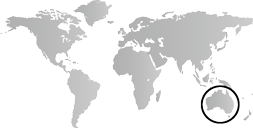Although the north coast of Australia may have been visited earlier by Macassan traders sailing from modern-day Indonesia, the period 1600–1800 sees the first encounters between European explorers and traders and the Aboriginal peoples of Australia. In 1606, the Dutch make the first known European landfall in Australia on the Cape York Peninsula. Between 1623 and 1636, the Dutch explore the north coast of Australia and become the earliest known Europeans to reach (and name) Arnhem Land, one of the most prolific centers of Aboriginal art. In Arnhem Land itself, as well as in other regions, Australia’s rich traditions of Aboriginal rock art continue to develop and thrive, as yet little disturbed by outside influences.
In 1770, the English explorer James Cook sails along the east coast of Australia and claims it for the British crown. Cook also collects a small number of Aboriginal weapons and other utensils, which become the first Aboriginal objects to enter European collections. Following Cook’s initial exploration, the British establish the first permanent settlement in New South Wales in 1788. Arthur Phillip, the colony’s first governor, reports seeing Aboriginal rock art in the form of engravings of “men, shields and fish roughly cut into the rocks.”
